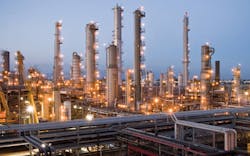Over-pressurization caused refinery blast in California
An explosion at an oil refinery in Torrance, California, last week was caused by too much pressure in a piece of equipment, according to the Washington Times.
The blast at the ExxonMobil refinery on February 18 blew off sections of the electrostatic precipitator (ESP), releasing spent catalyst into the air. A layer of dust was deposited in the local area on top of cars and homes and on the ground.
Air quality monitoring has shown that no serious levels of toxic materials were released.
The explosion is reported to have been triggered by over-pressurization in the ESP unit, which controls particulate matter emissions from the fluid catalytic cracking unit (FCCU). However, the cause of the over-pressurization is still under investigation.
According to a report by the South Coast Air Quality Management District (SCAQMD), the blast caused collateral damage to nearby equipment including a pre-treater and a water de-mineralizing unit. The damage to the pre-treater unit resulted in a hydrocarbon leak that caused the unit to be vented to the flares, leading to significant flaring and smoke.
SCAQMD conducted extensive tests on air samples and the fallout material following the explosion, checking for hydrocarbons, particulate matter and sulfur compounds as well as metals, hexavalent chromium and asbestos.
Results showed that hydrocarbons, particulate matter and sulfur compound levels were consistent with levels typically seen in outdoor air. Bulk samples of fallout material contained metals consistent with those used in the refinery’s FCCU catalyst and as collected by the ESP.
No asbestos was found in the fallout samples, although the samples did contain fiberglass and glass wool. Only traces of toxic hexavalent chromium were found, with the samples containing less than 60 parts per billion (ppb) — over 250 times below California’s residential soil screening level.
ExxonMobil has advised local people to remove the dust with water and mild soap.
